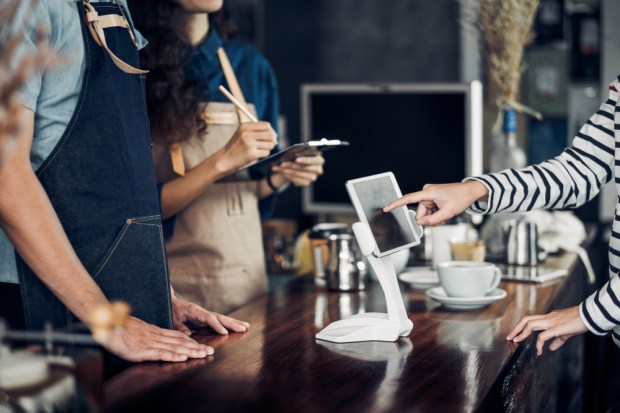Visa: Why Consumers Are In Control At The POS

Carleigh Jaques, SVP, global head of merchant digital products at Visa, contributed the following piece as part of PYMNTS’ 2018 year-end eBook.
For decades, the interaction at the point of sale was wholly focused on one thing — processing a transaction. It was an experience anchored in a fixed location that was dependent on and defined by power and connectivity capabilities. Over the past 10 years, the point of sale has been evolving as mobile technology has trained consumers to expect richer interactions while enabling the processing of the transaction to “come to them.” As technologies transform commerce, consumers expect greater flexibility, responsive functionality and more control at the point of sale.
Mobile-Enabled, Mobile-First, Mobile-Only
Businesses are moving from a mobile-enabled to a mobile-first and, in some environments, to a mobile-only customer engagement model. Cloud computing provides the foundation for transforming transactions from a hardware-based engagement to one that is increasingly software-centric. At the same time, merchants now see the point of sale as a branding opportunity. For some, that means a completely seamless experience that happens “behind the scenes,” while others are enabling highly personalized, experiential transactions.
User-experience leaders are taking a radically different approach to the point of sale. Amazon is skipping the traditional POS entirely to create a wholly digital self-checkout experience in its Amazon Go stores. Starbucks enables its most loyal customers to order their perfect, fully tailored cup of coffee ahead (grande half-caf, triple-foam latte with almond milk, please), and pick it up from a special station without ever interacting with the in-store POS. From the consumer perspective, this type of seamless, integrated engagement is their baseline expectation, and makes the digital, in-store, online, and in-app interactions virtually indistinguishable from one another.
Payments are becoming a more intuitive and embedded part of the experience, whether it’s a subscription service like Netflix, a quick-service restaurant like Pizza Express in the U.K. that allows in-app payments at the table or a service provider like Taiwan Taxi that gives customers the flexibility to pay by card in the car or in-app.
Consumers expect the businesses they frequent to know them and make life easier for them, even if it’s as simple as having their card on file. Deeper engagement across all channels offers merchants greater insights into customer behavior and the intelligence that can drive better recommendations and stronger relationships. Through CyberSource, Visa is enabling this integrated commerce by providing digital-first acceptance tools for merchants, underpinned by cloud-based transactions, card-on-file systems and tokenization.
Enabling the Omnichannel Experience
To deliver on customer expectations, merchants need solutions that work across online, mobile, and physical environments to provide fully integrated commerce solutions at scale.
Omnichannel customers are particularly important for merchants, since recent data has shown that although omnichannel shoppers represented only 7 percent of customers in 2018, they accounted for 27 percent of all sales. Additionally, customers who take advantage of multiple sales channels have 30 percent higher lifetime value than those who use only one. As a cloud solution, CyberSource helps merchants make omnichannel, integrated commerce scalable, enabling transactions and capturing data that facilitates a longer-term relationship with consumers.
It’s the best of all worlds — consumers get the flexibility and control they want, while merchants foster deeper relationships, connected across every channel for even more opportunity.
